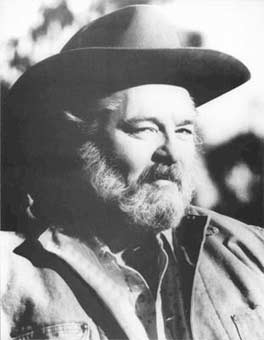George Coleman, a burly teamster, was John Wayne's transportation manager on many of his mms. He had that position in a film Bob was signed by Warner Brothers to make in 1954, "Blood Alley."
Fiction: Coleman refused to rent a bus to take the crew members from a Bay Area location to San Francisco for a night outing. Robert, indignant over George's lack of concem for his fellow crew members, took him to task at the end of a long pier. An argument followed. Coleman lost. The 278-pounder found himself floundering in the cold waters of the bay after what was publicized as "a little bit of horseplay." "Horseplay" my ass. Bob was mad.
After Coleman dried out, he protested to director William Wellman and to the assistant director, Andy McLaglen, the son of actor Victor McLaglen. Bob was fired as-typically-he didn't elaborate any defense; besides, he didn't like the part. So, the story goes, John Wayne took over Bob's role.
Fact "It never happened!" Brother Robert is adamant about it. The real truth lay in that John Wayne had a contractual glitch with Warner Brothers, needing one picture to fill out his obliga tion before contract renewal. When Warners told him that he could do "Blood Alley," Wayne said, "Mitchum is doing that one."
The powers that be at the studio simply pushed a button. "Mitchum is doing that one" became "Mitchum was doing that one." The elaborate story of Bob's recalcitrance with George Coleman became fodder for the media. Both Bob and Coleman denied the story, but the studio heat was intense. Something that had never happened became a studio legend.
But now the record is set straight.
***
Much has been written about Marilyn Monroe, but the thing that stays with me is Bob's comment after her tragic death: "Marilyn was much too fragile for Hollywood." He was not referring to her physical courage. When she and Bob were filming Otto Preminger's "River of No Retum" in 1953, a beautifully shot Cinemascope Westem, they rafted on the Bow River of Canada-without stunt doubles.
The raft started swinging out of control when the crew-manned security line snapped. They careened with alarming speed toward the turbulent rapids and could easily have been dumped in the rough water and jagged rocks. Bob insisted that Marilyn leave while she could with the help of the crew following on shore, but she refused until Bob could also be taken off the raft. 'You shouldn't be out here," she told him. 'You've got the flu so I don't get off until you do."
They got off-with a great deal of shouting and waving from the anxious crew. The raft didn't make it.
Marilyn's Achilles' heel lay in her caring too much.
Another member of that picture's cast was Westem actor Rory Calhoun,known to his peers as "Smoke." Bob and Rory became instant friends, reflecting Robert's penchant for running with the mavericks. Bob told me about Calhoun once when a columnist wrote a disparaging remark about Smoke's "pretty face."
"His real name is Timothy Francis Duggan and he spent time in Oklahoma for a little thing called 'armed robbery,'" Bob said. A few years later,
Rory was riding a horse in Griffith Park when a producer saw him and was impressed with the way he straddled a saddle. The producer asked Rory if he was in pictures. Smoke told him no. The producer suggested he should try the business. Smoke got an agent, and learned that the producer wanted him to change his name. And Rory Calhoun was bom.
In rapid succession Bob did William A. Wellman's "Track of the Cat" for Warner Brothers (based on a very strange allegorical tale by Walter Van TIlberg Clark) and "Not As a Stranger" for United Artists (based on a verypopular novel by Morton Thompson). While making the latter film under director Stanley Kramer, Bob worked with Frank Sinatra and they became close friends. For years Bob would get a Mother's Day card from the singer that read, "Happy Mother's Day. You Mother!"
Following "Not as a Stranger," Bob did a remarkable fIlm, "The Night ofthe Hunter." For sheer ability Bob deserved the Academy Award for his role as a psychotic hymn-singing preacher pursuing two small children for a hidden fortune. Unfortunately, the fIlm was a financial disaster. I have long since shed the illusion that the Oscar goes to the "best actor" or the "best actress." The fIlm has since become a popular cult classic.
It was the only picture actor Charles Laughton ever directed. I met him and he told me that Bob rated among the fmest talents". . . ever to perform anywhere." If you see the fIlm, look and listen to Bob as he stands in the water, watching the two children drift away from him, escaping on the river. My brother is either stark, raving mad, or one fine actor.
